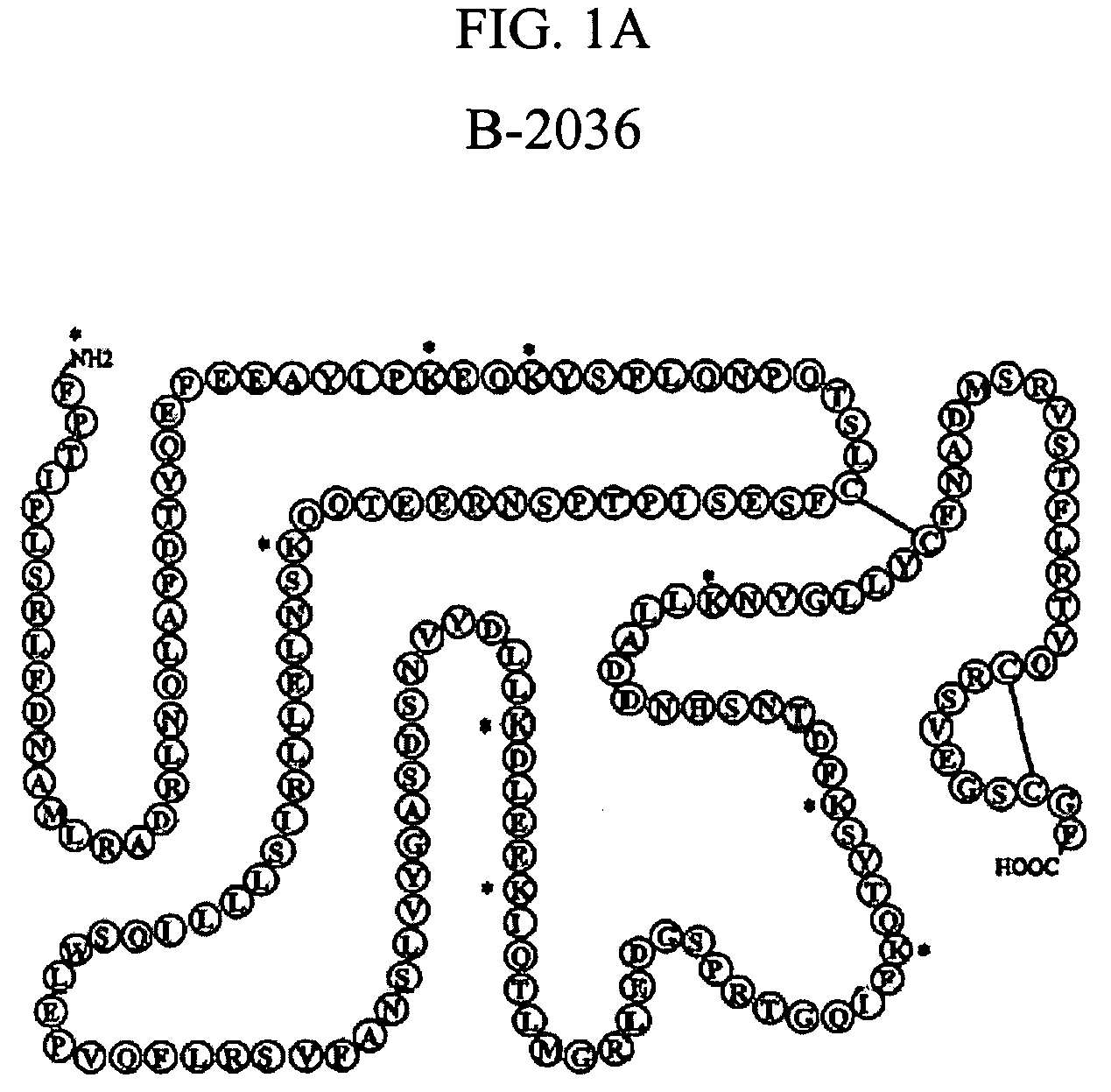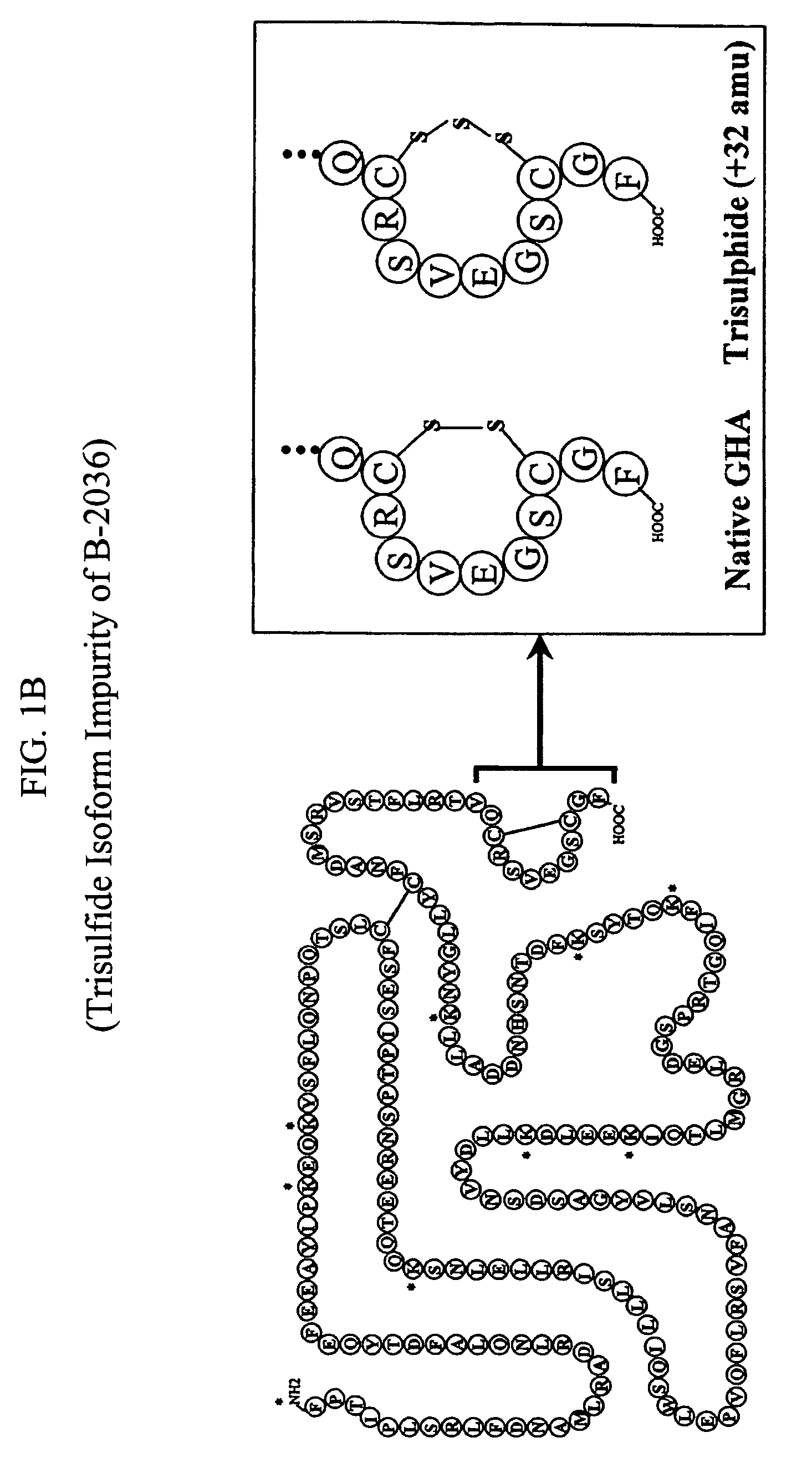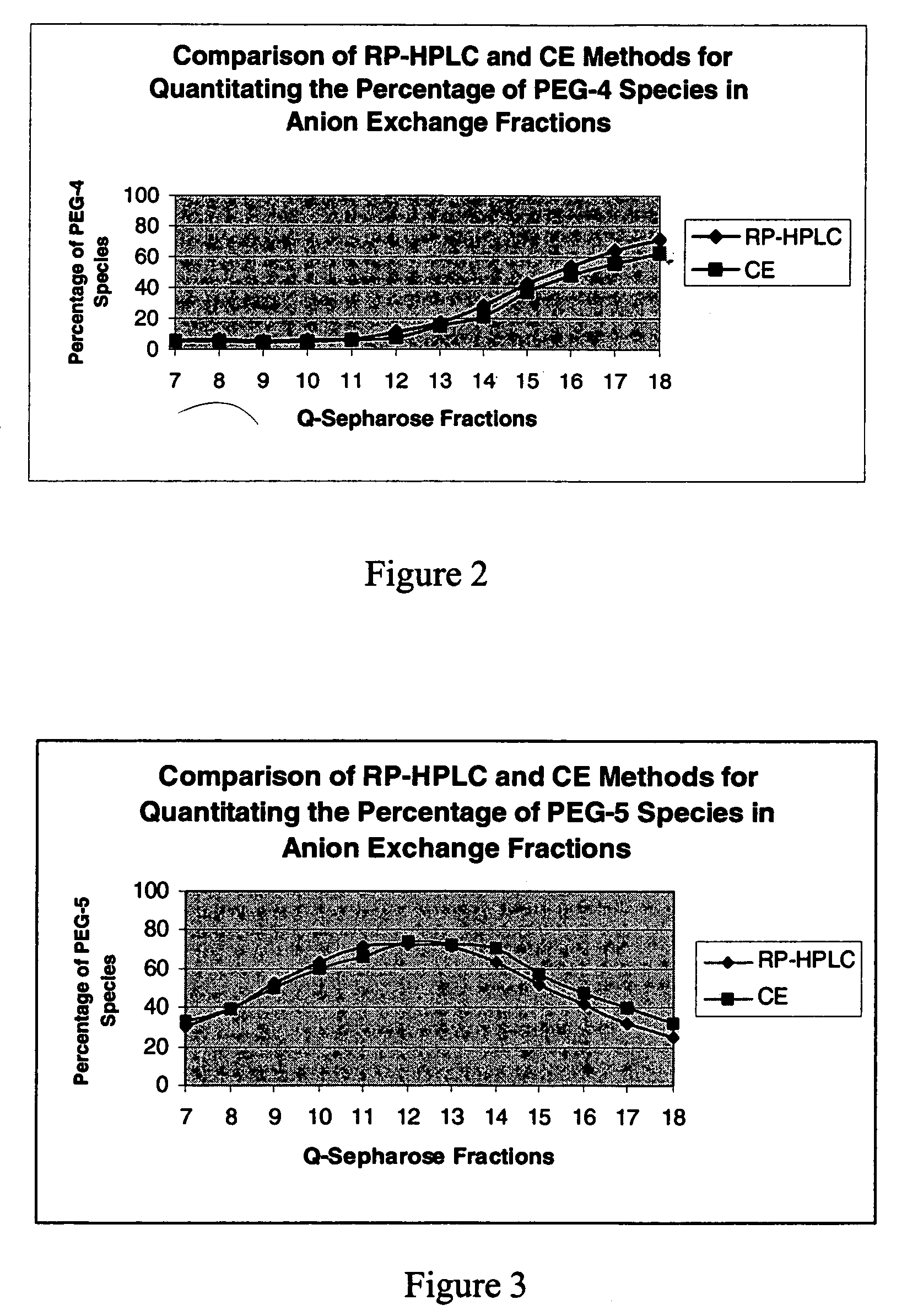Process for decreasing aggregate levels of pegylated protein
a pegylated protein and aggregate technology, applied in the field of recombinant, can solve the problems of affecting the signal transduction of human growth hormone, forming undesirable aggregates, and affecting the formation of isoform impurities, and achieve the effect of reducing the formation of des-phe isoform impurities
- Summary
- Abstract
- Description
- Claims
- Application Information
AI Technical Summary
Benefits of technology
Problems solved by technology
Method used
Image
Examples
example 1
Maintain or Decrease Level of Aggregate of Pegylated Growth Hormone Antagonist (B-2036-PEG) by Anion Exchange Chromatography
[0457]Maintenance (below a desired level—e.g., ≦6% by weight of total weight) or decrease of aggregate levels of B-2036 PEG was accomplished by using BI (the Bulk Intermediate B-2036) as the starting material prepared as indicated in non-provisional U.S. patent application Ser. No. 10 / 662,884 entitled Method for the Production Of Growth Hormone And Antagonist Thereof Having Lower Levels Of Isoform Impurities Thereof, filed Sep. 16, 2003 before the U.S. Patent and Trademark Office. Fermentation (to yield B-2036) in a recombinant E. coli expression system was carried out as described by Cunningham et al. in U.S. Pat. No. 5,849,535. Purification of B-2036 BI was performed as described by the above-identified non-provisional U.S. patent application Ser. No. 10 / 662,884). This material was then processed using the initial pegylation and hydrophobic interaction chroma...
example 2
Small Scale Procedure for Evaluation of the Effect of Additives on S-Sepharose FF Aggregation (Cation Exchange Chromatography Resin) of B-2036 PEG
[0460]To a 15 ml centrifuge tube, 1.5 ml of S-Sepharose FF resin (settled bed volume) was added. The resin was prepared for protein binding by rinsing twice with 10 ml of a 1% solution of the additive to be evaluated in 25 mM Sodium acetate, pH 4. After each rinse, the supernatant was collected (by centrifuging) and decanted and discarded. To the rinsed resin pellet, 2.5 ml of 1% solution of the additive to be evaluated in 25 mM Sodium acetate, pH 4 was added and a quantity of UF / DF retentate was added containing approximately 5 mg of B-2036 PEG from step 3 (prepared by the method of flowchart 2, steps 1 through 3). The resin was then re-suspended in the solution and incubated with gentle mixing for 2 to 24 hrs. After incubation, the solution was centrifuged, and the supernatant decanted and discarded. The B-2036 PEG was then eluted from t...
example 3
[0462]RPHPLC Analytical Technique RPHPLC is used here to monitor and quantitate percentages of pegylated species (e.g., PEG-4, PEG-5, and PEG-6) found in Q-Sepharose column fractions from anion exchange purification of pegvisomant.
[0463]25 uL of each Q-Sepharose (anion exchange step, see Example 1 above) fraction (protein concentrations ranging from 0.5 to 1.3 mg / mL) are applied to a Zorbax 300SB-CN column (4.6 mm×150 mm; 3.5 μm; Part Number 863973-905; serial number USMJ001205). Mobile phase A is 0.1% trifluoroacetic acid while mobile phase B consists of 0.085% trifluoroacetic acid in acetonitrile. A linear gradient from 40 to 50 percent Buffer B over 20 minutes at a flow rate of 1.0 mL / min at ambient temperature is used for separation of the different Pegylated forms of Pegvisomant. Absorbance is monitored at 214 nm.
[0464]The results obtained by RPHPLC are similar to those derived by capillary electrophoresis (CE) as indicated in FIGS. 24. below. Also, see Example 4 below for CE a...
PUM
| Property | Measurement | Unit |
|---|---|---|
| weight ratio | aaaaa | aaaaa |
| weight ratio | aaaaa | aaaaa |
| temperature | aaaaa | aaaaa |
Abstract
Description
Claims
Application Information
 Login to View More
Login to View More - R&D
- Intellectual Property
- Life Sciences
- Materials
- Tech Scout
- Unparalleled Data Quality
- Higher Quality Content
- 60% Fewer Hallucinations
Browse by: Latest US Patents, China's latest patents, Technical Efficacy Thesaurus, Application Domain, Technology Topic, Popular Technical Reports.
© 2025 PatSnap. All rights reserved.Legal|Privacy policy|Modern Slavery Act Transparency Statement|Sitemap|About US| Contact US: help@patsnap.com



